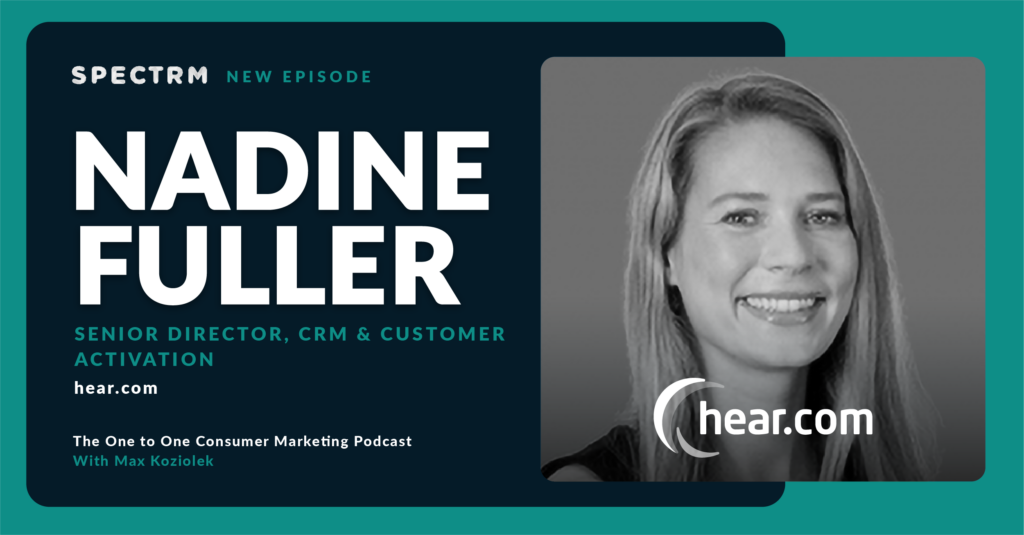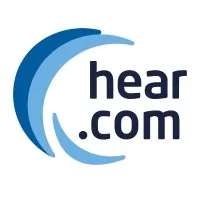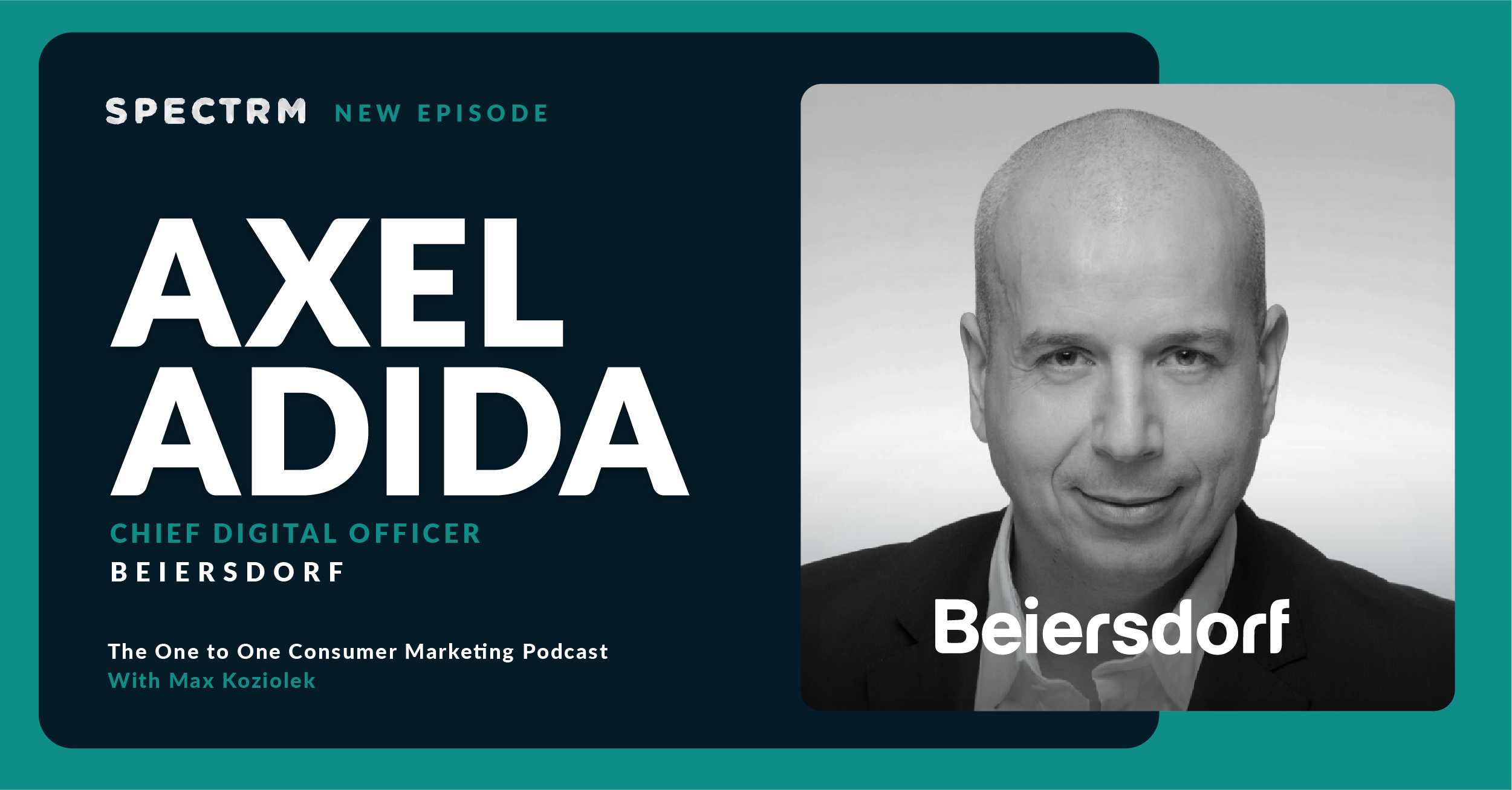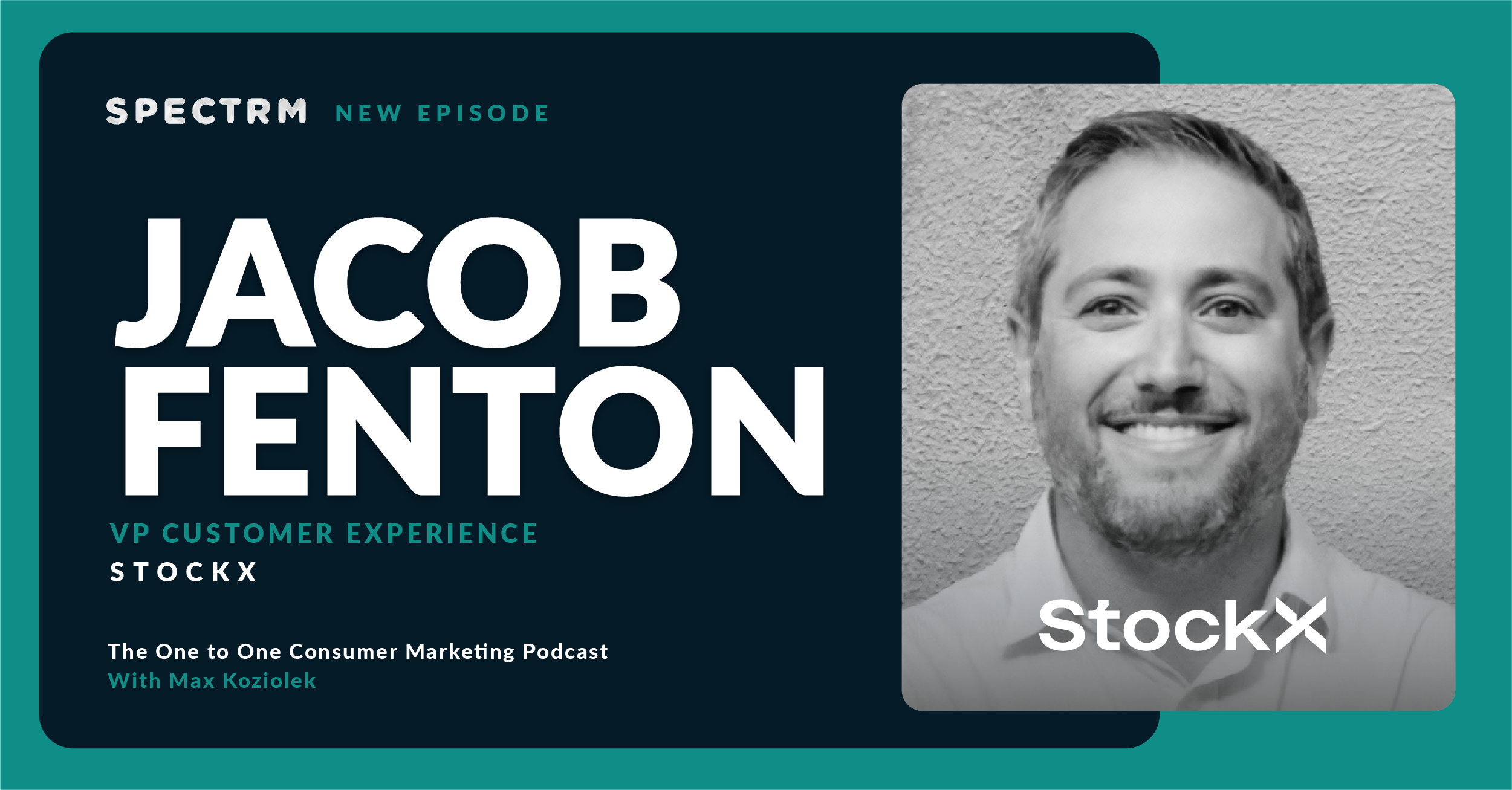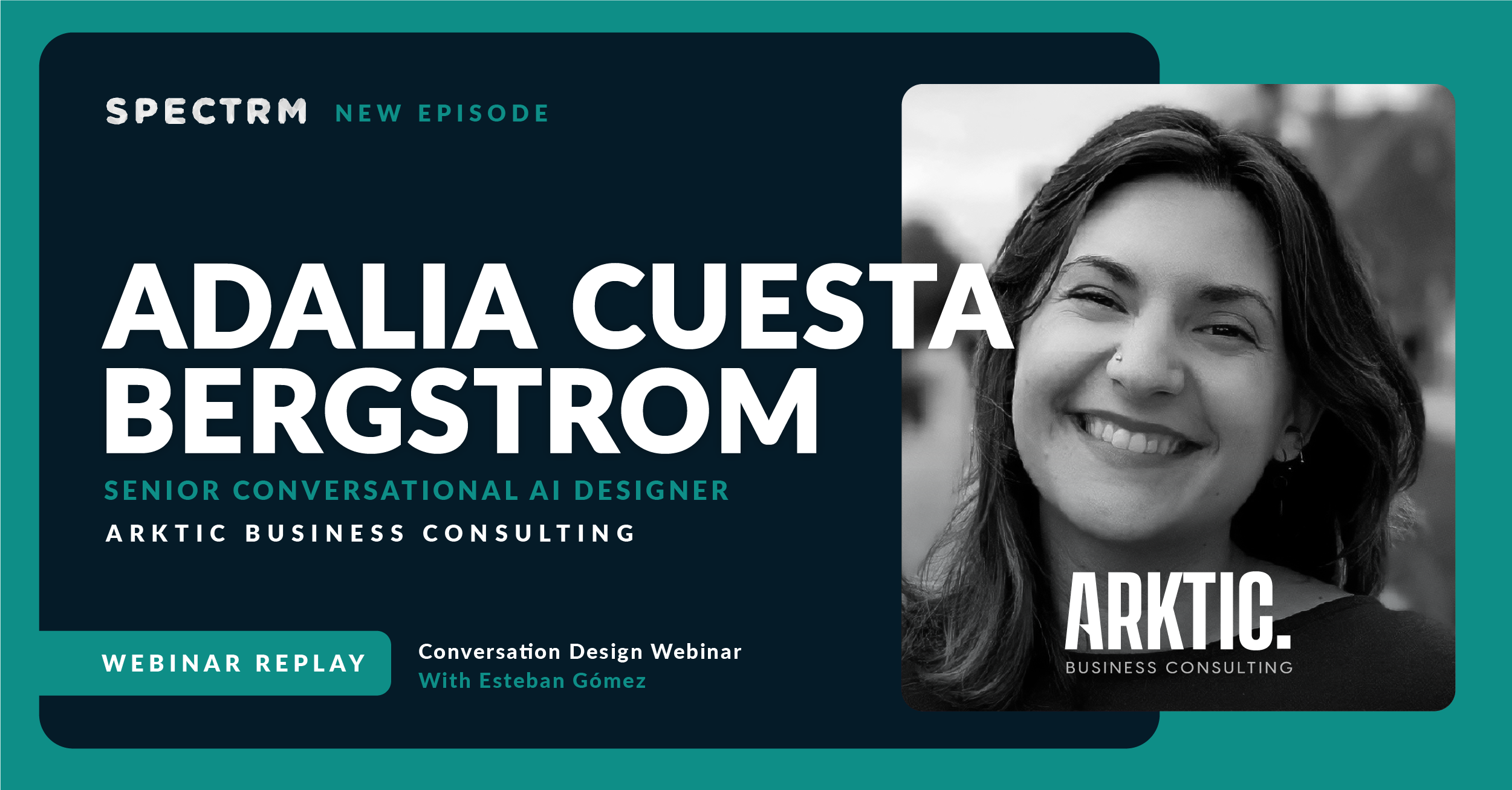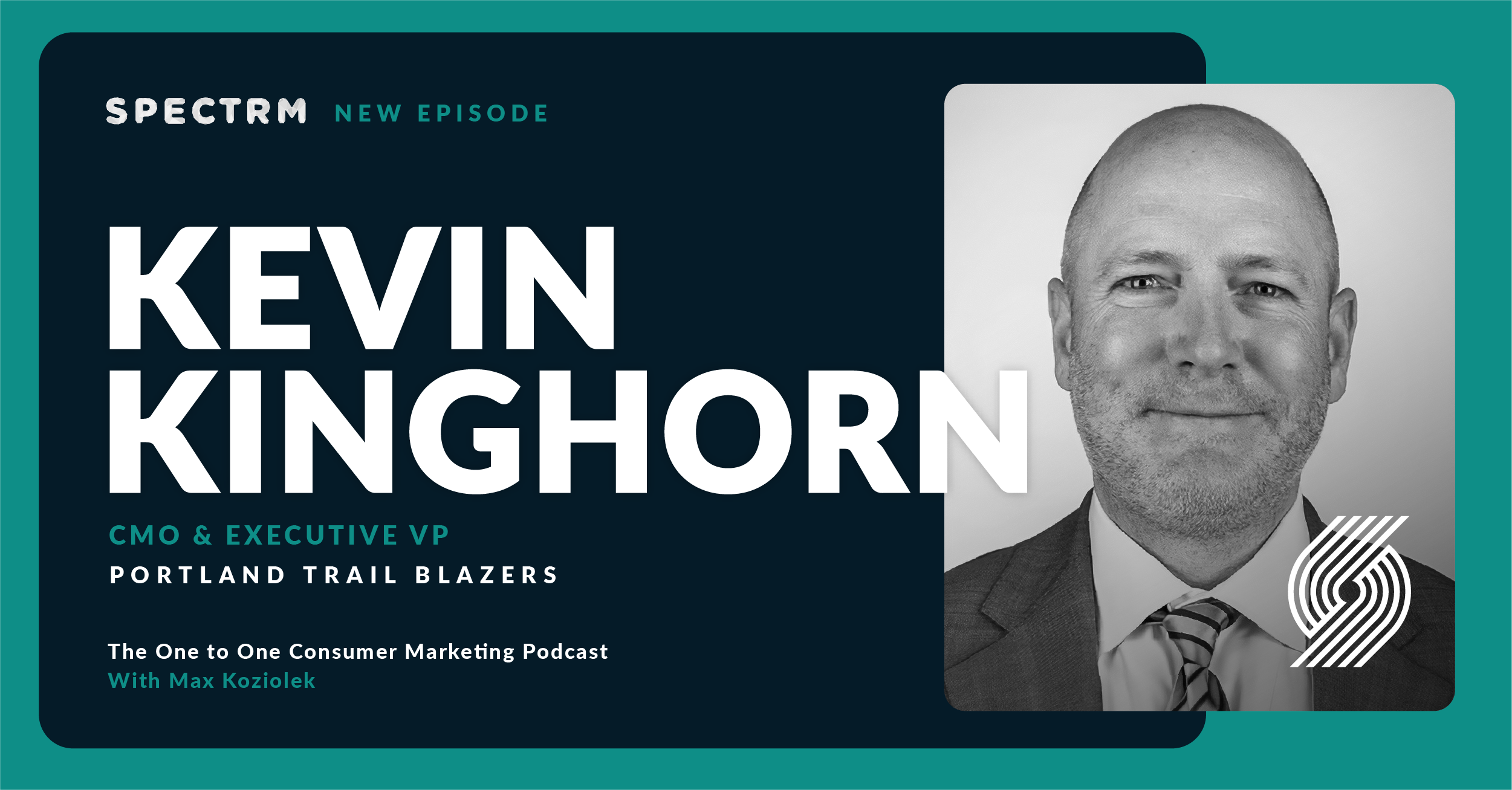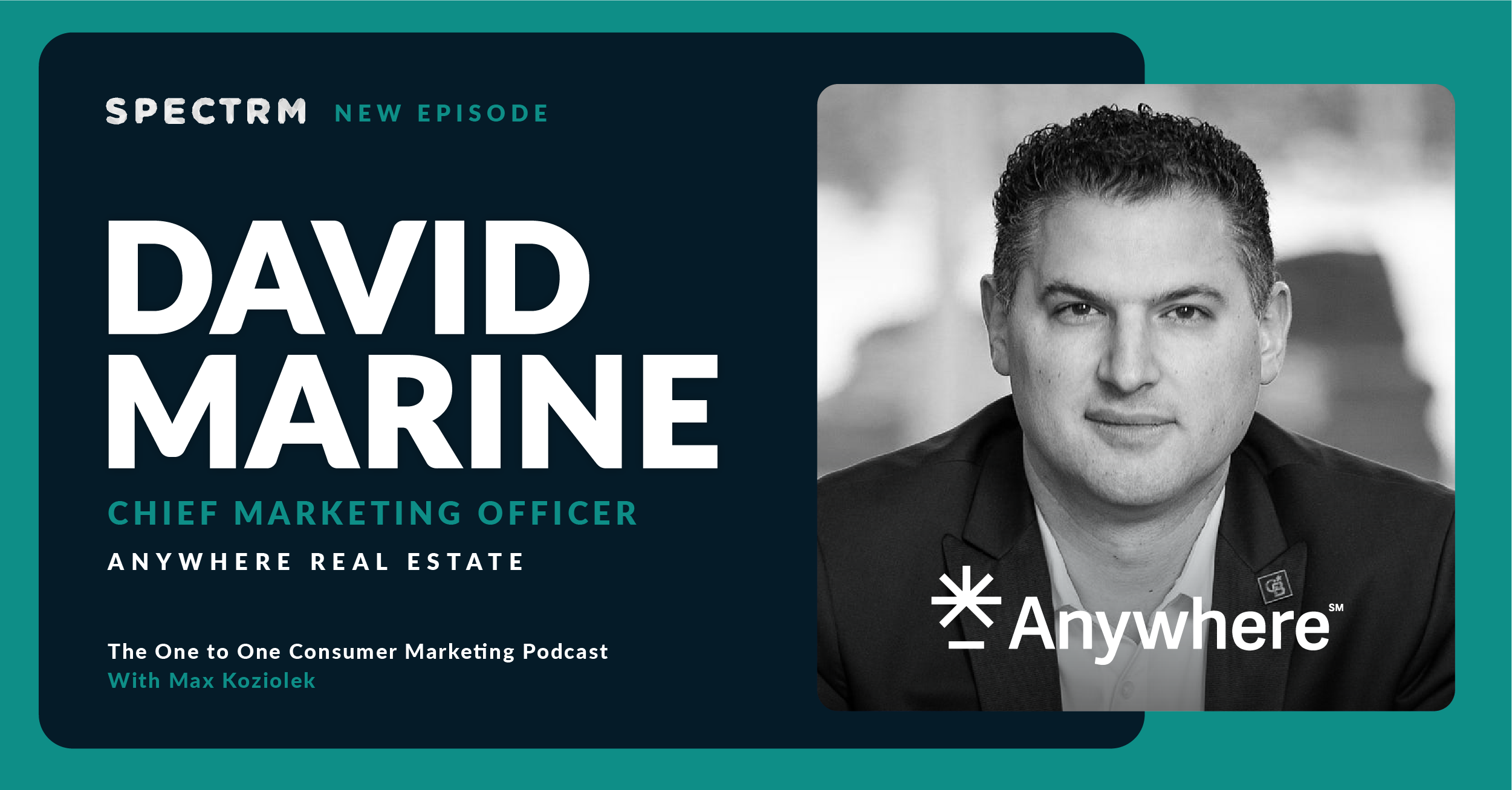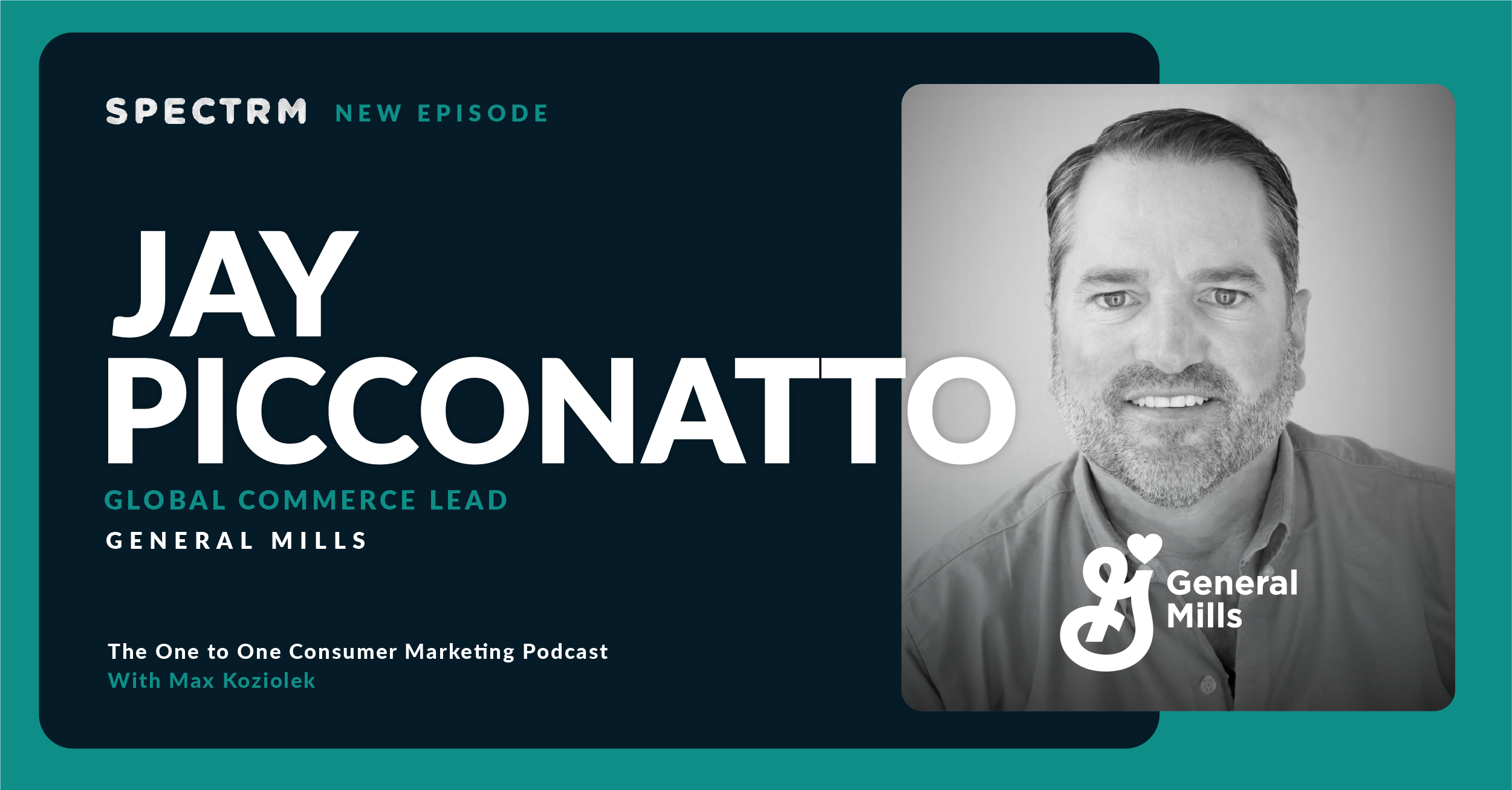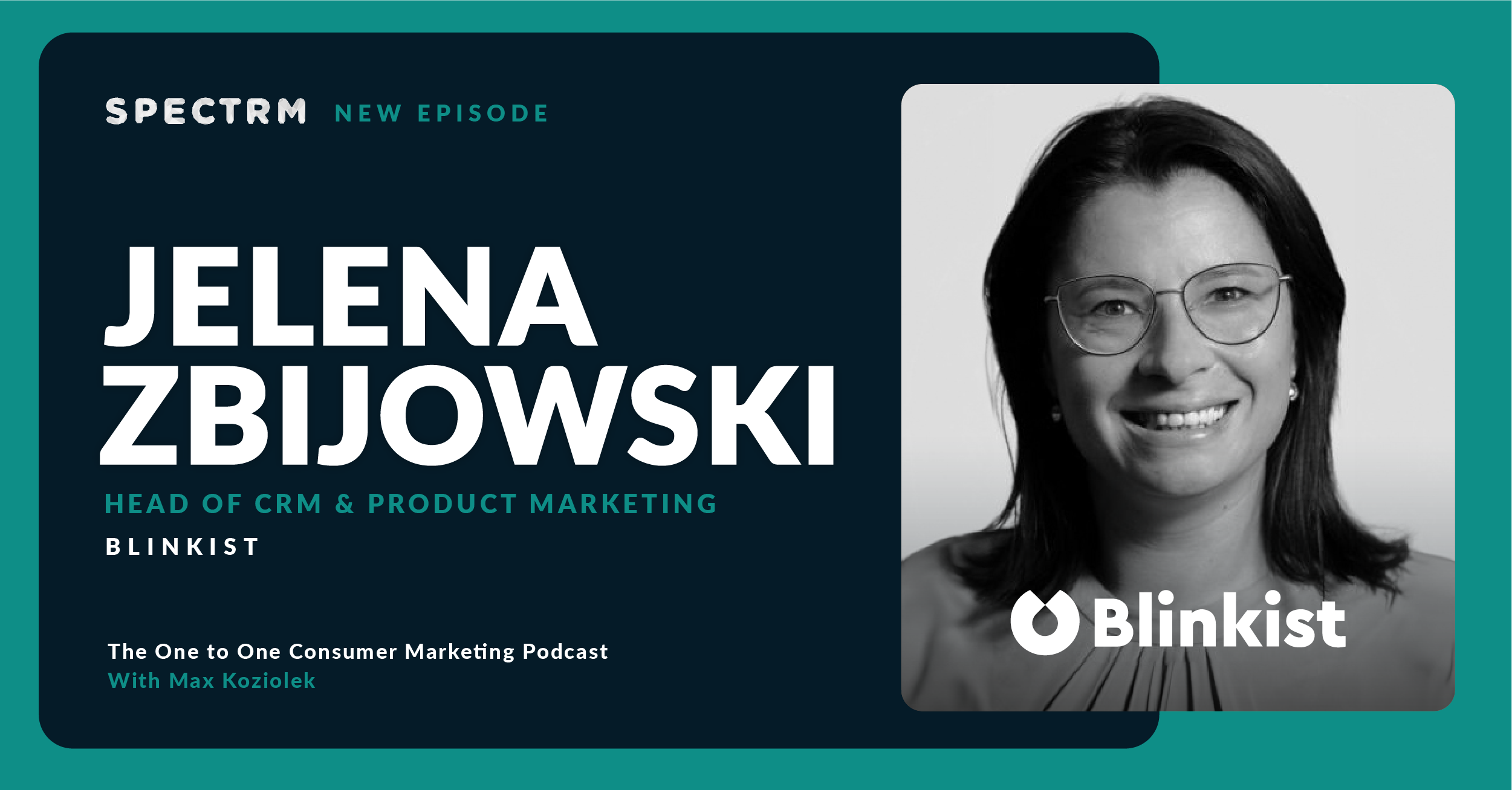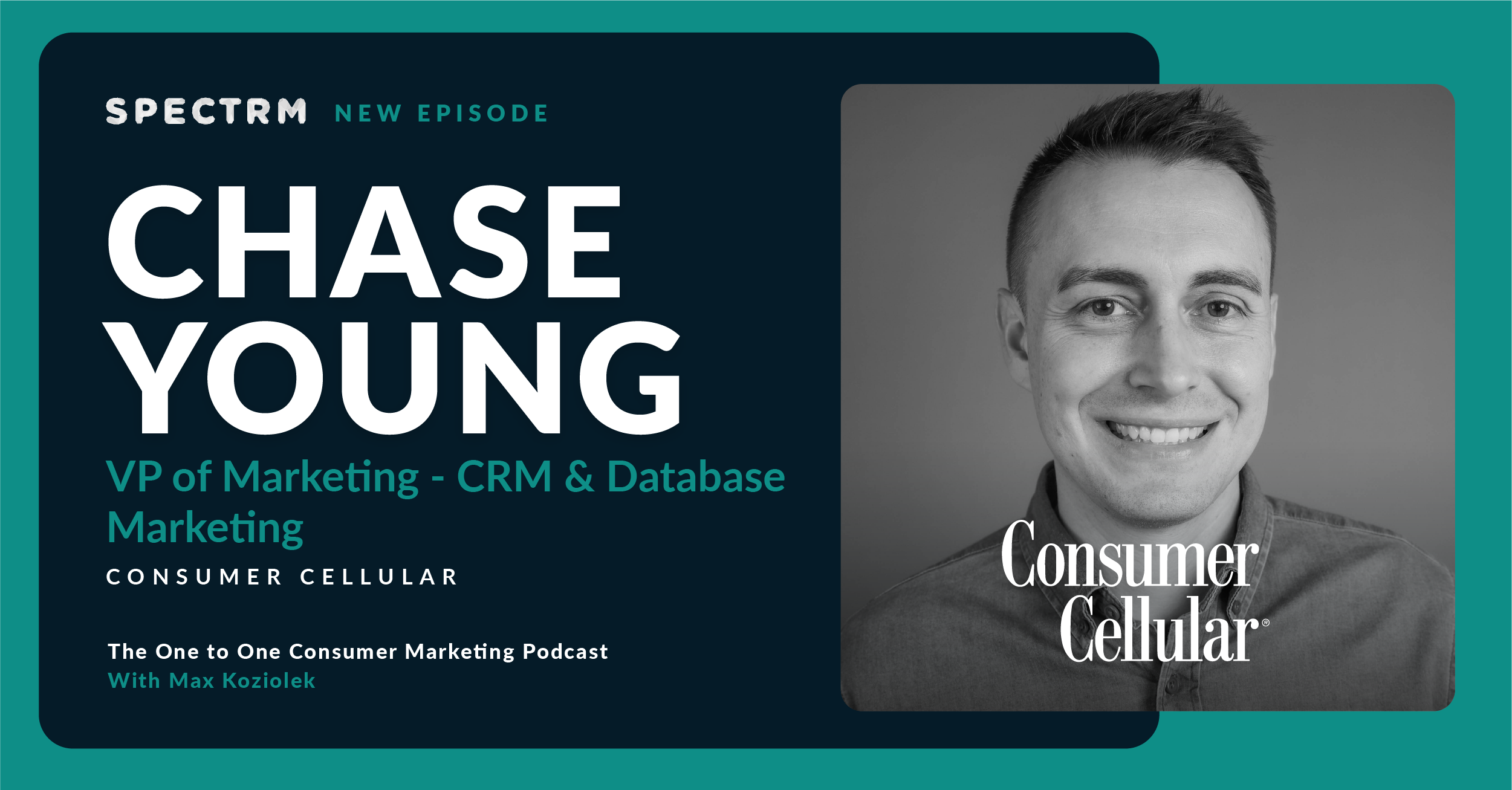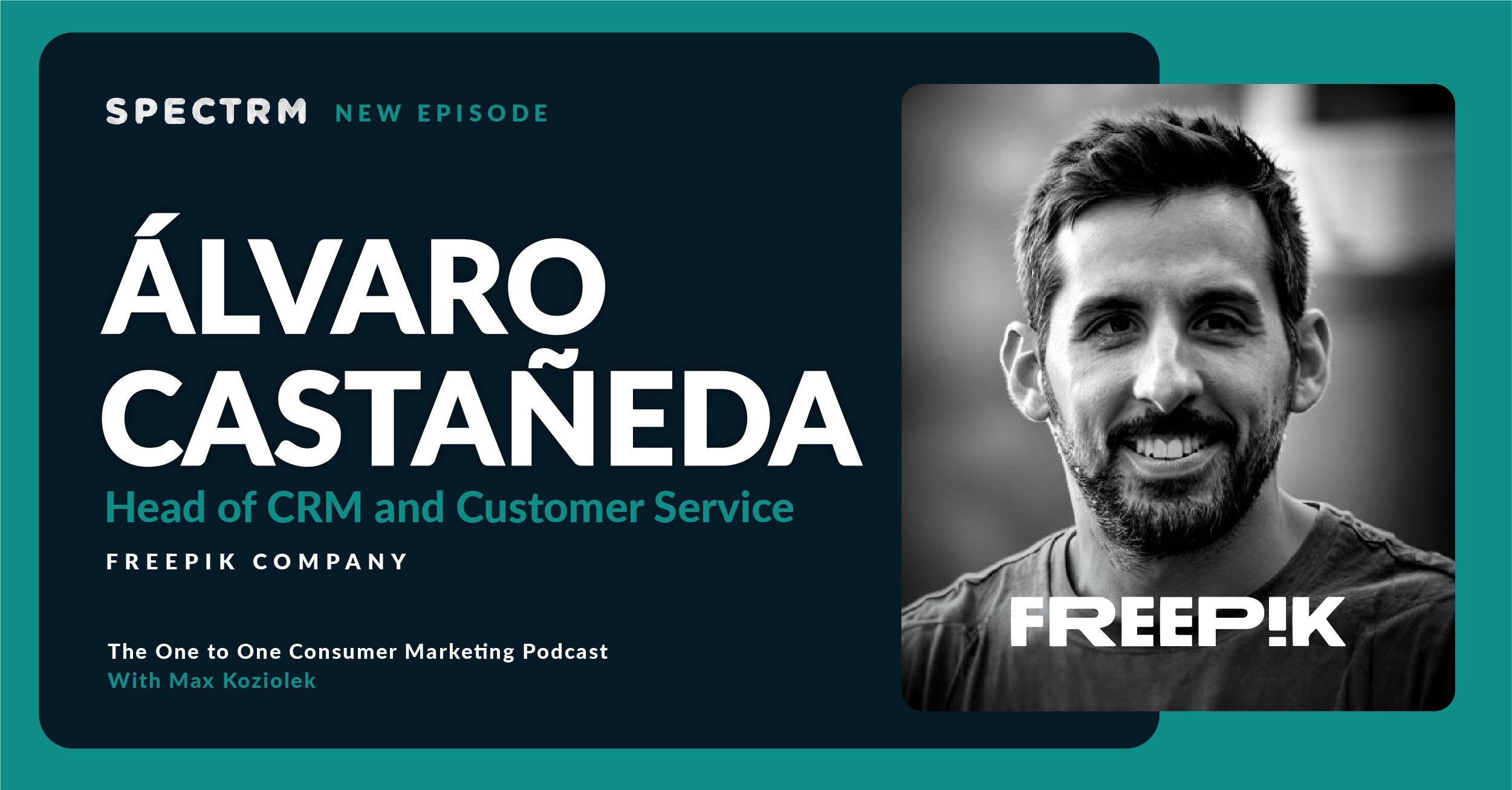Summary
Max speaks with Nadine Fuller, Sr. Director, CRM & Customer Activation at hear.com. They discuss hear.com’s strategy for communication that includes choosing the right content, channel, and timing, as well as how to keep customers engaged when there may be years between purchases. They also talk about the importance of testing, the challenges and opportunities of today’s many channels, and what tools hear.com uses for effective CRM.
Topics discussed
- The marketing strategies required to sell a product that people need but don’t necessarily want.
- How hear.com approaches their customer communication, including choosing the right segment, content, channel, and timing.
- Why you still need to stick with basic marketing principles, whichever CRM tool you’re using.
- How constantly-changing channels and partners are hard to navigate, but also present more opportunities as well.
- How hear.com uses SMS to interact with and deliver value to their customers.
- Strategies for long-term customer retention and the unique challenges marketers have when sales might be seven years apart.
- Advice for marketers, including how you can accelerate your marketing program through testing.
There's a lot of hesitancy around buying hearing aids. And so when I think about CRM, my main mission is to shorten that seven year time frame. How can I get hearing aids on people in a shorter time frame than that seven year average? And so we use CRM in a very unique way in the sense that our paid team really focuses on acquiring new contacts.
Guest biography
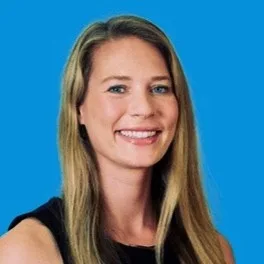
- Nadine has extensive experience leading and implementing holistic digital advertising and marketing strategy for eCommerce and Retail clients. She helps businesses acquire and retain customers through various channels including search, social, display, video, programmatic, email, SMS, direct mail and push.
Company overview
hear.com is the fastest-growing hearing care company globally. Since starting its journey in 2012, the company has helped over 100,000 customers get on the path to better hearing. In just 7 years hear.com has grown its team from 2 to over 1,000 people. They work in 10 international locations from Miami to Seoul.
Industry: Hospitals and Health Care | www.hear.com
Subscribe to the podcast newsletter
Transcript
00:00
Nadine Fuller
There’s a lot of hesitancy around buying hearing aids. And so when I think about CRM, my main mission is to shorten that seven year time frame. How can I get hearing aids on people in a shorter time frame than that seven year average? And so we use CRM in a very unique way in the sense that our paid team really focuses on acquiring new contact.
00:28
Max Koziolek
Hey everyone, and thanks for listening to the one to one consumer marketing podcast. Today I’m speaking with Nadine Fuller, senior director of CRM and customer [email protected]. Thanks for chatting with me today.
00:38
Nadine Fuller
Thank you for having me on the show, Max.
00:40
Max Koziolek
So for the folks that don’t know, hear is the fastest growing hearing aid company in the world. It grew from just two people to over 1000, and it was founded in 2012. So helping people to finally hear again the world, that’s an exceptional and very exciting mission. Nadine, what a great day to have you on the show. But before we get started, why don’t you tell us a little bit more about yourself, your background and how you end up in your current role?
01:07
Nadine Fuller
Yeah, absolutely. So I’ve definitely taken a couple of turns in my career, but I’ve been in marketing for the last 15 years and focused on marketing within client services. So I started off in the performance advertising agency world. Back before there was Facebook advertising, I was hands on keyboard doing paid search, typing out keywords and masking ad copy to keywords and doing everything very manually before we had a lot of algorithms to help us along our way. But it was a really good experience. Got that kind of hands on experience running marketing campaigns for a variety of different businesses as well as in different industries. So b, two b, retail ecommerce. After that, I got the opportunity to join a startup agency called Metric Theory. And that was a really exciting opportunity. I built out their account services team.
01:57
Nadine Fuller
I managed all of the clients out of our office and spent about seven years building that business, which we then sold to s four capital and metric theory. Kind of became part of media months. So after that I took a bit of a break and decided my whole career I’d focused on acquisition marketing. And I really knew very little about what happens after you acquire a customer. How do you actually retain them and grow the business? And so I decided I wanted to learn more about that part of marketing. And I joined a startup tech company called Leanplum, where we focused on mobile first companies and various CRM channels, SMS, email, Inapp Push, et cetera.
02:38
Nadine Fuller
And there I was on the customer success team guiding larger enterprise clients through their CRM strategy, which was really how I was able to finally kind of connect the two pieces of marketing. After that, I spent two years at Deloitte putting that kind of all together and working with enterprise level customers on their paid and retention advertising and then recently decided to go in house. So that was a big change for me after being in client services and really an exciting change when here came across, I was really excited to work with a company that has a product that helps people. That was really important to me. I need to feel like the marketing I’m doing is actually doing something good for the world. And with hear, I think they have a really interesting business model and it’s a big problem, right.
03:24
Nadine Fuller
There’s 1.5 billion people worldwide who have hearing loss and 40 million Americans alone. So there’s a huge market to improve people’s hearing. And so what I [email protected] is I run our CRM primarily. Channels that we work on are email and sms, but I work very closely with the paid team, the product and the creative team to really help grow the business.
03:47
Max Koziolek
That’s very cool. And going in house, as you described it, how was that change for you? I mean, you have worked with a lot of customers before as lean, Plum and Deloitte, but how is it when you go in house?
04:01
Nadine Fuller
Yeah, I was hesitant at first, but honestly, I really love it. I love being able to just focus one marketing strategy and really dive a level deeper than what you can really do when you’re serving multiple clients at a time. So I really have the time to think through the problems and the solutions that I want to implement. And I have a great team that I can work with that we can really look into the data and use that data to make decisions and then do testing and see how what that test does and actually see it through, which sometimes you don’t really get to do when you’re on the other side and you’re in client services. So it’s been a really great career change for me.
04:37
Max Koziolek
That’s good to hear. So that’s hopefully encouraging also for others to sometimes make a bigger change in their career and switch sides. They either go from brand to vendor or the other way around. I think both can be very exciting and brings a full new perspective. But looking a little bit deeper into here and how you work in CRM, how do you leverage CRM for your customers?
05:01
Nadine Fuller
Yeah, so I [email protected]. We have a really interesting problem to solve with CRM. So we are selling a product that people really need, but a lot of people don’t actually want. So it’s marketing challenge. Right. And with hearing loss, it’s difficult because on average, when someone notices their hearing loss, it takes them seven years to actually buy a hearing aid. Seven years? Yeah, partially. That’s because hearing loss is very gradual, so you may notice it right away. There’s also a lot of stigma around wearing hearing aids and aging. A lot of people think of kind of those big, bulky hearing aids that your grandpa wore. So there’s a lot of resistance to getting hearing aids, and also in the US, not necessarily covered by insurance, so it can be a big investment.
05:50
Max Koziolek
Right.
05:51
Nadine Fuller
So there’s a lot of hesitancy around buying hearing aids. When I think about CRM, my main mission is to shorten that seven year time frame. How can I get hearing aids on people in a shorter time frame than that seven year average? So we use CRM in a very unique way in the sense that our paid team really focuses on acquiring new contacts.
06:11
Max Koziolek
Right.
06:12
Nadine Fuller
And a lot of times when those new contacts come into here, they have a call with our consultant, but they’re not quite ready to make that commitment yet. And so that’s when they come into the CRM machine. And that’s how we then use CRM to try to reactivate that lead by educating the contacts, really trying to nurture them along their journey to addressing their hearing voice.
06:30
Max Koziolek
That’s so interesting. So you pulling, shortening the seven years to two years, three years, one year, or whatever it is, as you described it so well that people actually need it, but most of the time, for marketers, it’s the other way around. Right, exactly. That’s very interesting. But how do you communicate that to the people? Because I have the feeling at some point you’re going to need it. If you have hearing loss. So what are you going to do? So just making that happen, is that the communication around, hey, Max, you can really hear anything at the dinner table. Really? Can you hear anything? Right. How’s it going with, you want to postpone the decision a little longer or you want to buy now and be a full member of the family again? How do you do that?
07:13
Nadine Fuller
Yeah, I mean, it’s definitely a delicate subject.
07:16
Max Koziolek
Right.
07:17
Nadine Fuller
And in terms of a communication, you have to be very conscious about how you’re communicating that when I think about the way that we communicate, I first think about the general principle, like, who am I communicating? So we have a lot of data on our contacts, and we try to segment that data based on different similarities and behavior, et cetera. So we can then figure out how do we speak to someone who is brand new to a hearing aid where we’re trying to shorten that seven year time frame? We also have a lot of people that already have a hearing aid, but they’re not happy with it. And so we’re trying to get them to then purchase a hearing aid through hear. So two very different segments. We need to talk to them very differently.
07:51
Max Koziolek
Right.
07:51
Nadine Fuller
So we do a lot of that kind of segmentation, even between male and female. We’ve noticed there’s a lot of difference in terms of how you can convey why hearing aids are important and what’s important to different people. So we first start with, obviously, the segmentation. Then we think about what kind of content makes sense, and a lot of times it’s very educational based. Why is it important to address your hearing loss?
08:13
Max Koziolek
Right.
08:13
Nadine Fuller
There’s a lot of scientific data around don’t address your hearing loss. It can lead to dementia and other kind of brain functioning. And so there’s a lot of information out there that we just try to communicate and share. And then we think, of course, which channel, right. And so whether or not someone is more perceptive and likes to get that communication via email or sms, we adapt there. And then we think about timing. Right. And so when someone first signed up with Peer.com, we know that they’re interested and there’s something there. So we really try to send out more communication after a while. If they still haven’t committed, then we say, okay, let’s just stay top of mind.
08:46
Max Koziolek
Right?
08:46
Nadine Fuller
Let’s reach out once a month or every two weeks and just stay top of mind so that when maybe something external in their life happens, where they’re like, okay, I really need to do something about my hearing loss.
08:55
Max Koziolek
They remember hear.com and they come to us very interesting. You have a very technical background, right? Or fairly technical background. You know the tools quite well. You work on the other side. When you think about channels and segments, how to activate this, has that helped you in doing that? Or you have to relearn a little bit because you’re now fully responsible on the other side. How’s that for you personally?
09:18
Nadine Fuller
Yeah, I mean, definitely when you go in house, you do have to go a level deeper than when you’re on the consulting and client services side. So I’ve definitely had to learn quite a bit. And we’re also actually migrating to a new ESP. So we’re migrating over to braze right now. So there’s a lot of technical and data work that’s happening right now within my team, but it’s all very exciting. And I think at the end of the day, every tool obviously has pros and cons, but I think you just have to stick with the general marketing principles that apply really to paid or retention, which is you think about who do you want to contact, what do you want to send them, what channel are you using and when are you going to interact with them.
09:57
Nadine Fuller
That kind of strategy applies to any tool that you’re utilizing.
10:01
Max Koziolek
What’s for you, when you mentioned the stigma is hard to overcome, that basically prolongs the sales cycle. What other challenges do you currently see also in the industry when it comes to managing these channels and getting this message across?
10:17
Nadine Fuller
Yeah, I mean, I do think the landscape has really changed, especially when I think about when I first started and there was just a few advertising and marketing channels. Today there’s a plethora of channels and partners that you can choose from in the acquisition space and the retention space. And I think it’s a challenge because the way that we segment, the way that we target, the way that we display content or ads, it’s constantly evolving and the underlying algorithms for all these channels are constantly changing. And so it’s hard to be an expert in all these different channels. So I think that’s really, for any marketer, is a challenge. At the same time, I also feel like there’s more opportunity than ever before to find that winning combination of channels and partners that you can utilize to grow your business.
11:03
Nadine Fuller
There’s no one playbook that works for everyone. Right? I’ve worked with so many different clients and you really have to adapt to the business and see what can work. And a lot of that means testing. Right? So I’m a big believer in testing out different partners, testing out different channels to see what is going to work and what can I scale and grow. And also just knowing that even if I find something that works, it might change by the next year. So I’m going to have to continue adapt my strategy and my channels. And I think for CRM specifically, most CRM marketers are obviously still doing email. A lot of CRM is now going into SMS. I have noticed that with here they started with SMS before I started.
11:41
Nadine Fuller
I’ve been with the company for about a year and it has been our largest channel, but I’m starting to see it become more competitive, even compared to one to two years ago. I see a lot more companies utilizing that channel. So it’s a little bit harder to stand out in the SMS space than it maybe was a year or two ago. And then we’re a global company. In other countries, we also use WhatsApp messenger for communication as well. So I think that’s kind of an interesting channel that we haven’t explored in the US yet. But, yeah, there’s always more to test out.
12:10
Max Koziolek
Very interesting. Why do you think SMS became the largest channel for you, especially in the US?
12:16
Nadine Fuller
Yeah. Our demographic are baby boomers, and it seems that SMS really resonates with them. It’s an easy way for us to stay top of mind. Obviously, with SMS it is a bit more invasive than email. It’s a delicate balance. Right. You don’t want to send too much, you don’t want to be too invasive. But we try to find a way where we still stay top of mind and we generally just see higher lead reactivation from SMS than we see on the email side.
12:46
Max Koziolek
Understood? Understood. For you, it becomes a lead when someone submitted their data and have spoken to consultant. Or is it just the submission of data? When does it for you? A lead becomes a lead and you take over from the performance team.
13:00
Nadine Fuller
Yeah. So basically the way it works is the paid team will bring in the leads. They’ll maybe have a conversation with the sales consultant. If that doesn’t work out, they become a contact in CRM. And then on the CRM side, we look to reactivate them back into a lead so that they then can talk to a sales consultant. And then ideally they have an appointment, which is when their hearing device is fitted, they have a 45 day trial, try the hearing aid, and then we turn it into a sale. So ultimately, with CRM, I’m driving sales, but the primary KPI, the first step KPI is that lead.
13:34
Max Koziolek
Interesting. I mean, there you drive the majority of the business. You are at the core of the business. That’s a lot of responsibility. And I know that talking to a lot of CRM leaders, that sometimes weighs heavy on the shoulders. Right. But aside from that, are you also responsible for, I would say, classic CRM, which is selling another hearing aid because sometimes you might need a new one. Or how do you think about loyalty or customer lifetime value?
14:02
Nadine Fuller
Yeah, definitely. So that’s still a very important [email protected]. And I think anyone that’s running a business where you have a product that lasts quite a long time, it’s a different game. So no one is buying a hearing aid every month. Hearing aids should last you three to seven years. There are a lot of very big technology leaps with hearing aids about every three to five years. So there are some people who, wanting the next Apple iPhone, want the next hearing aid with the newest pet. So there are some subset of people who will buy more frequently. But generally three to seven years is how long a hearing aid will last. So for us there, the challenge is one, there’s very little brand recognition in the hearing aid space, right? There’s not really one brand that people know about.
14:43
Nadine Fuller
And so when someone purchases from us, really our challenge is to stay relevant for three to seven years until they’re ready to purchase another hearing aid. That strategy is something that we’re still trying to fine tune and figure out. How do we stay relevant without being bothersome over such a long period of time, and what kind of content can we provide that’s helpful for the customer and then keeps it relevant so that when they are ready to upgrade or get their next hearing aid, they come back to hear. So we do use email and sms for those purposes as well.
15:16
Max Koziolek
Very interesting. When you think you’re describing a little bit what comes next, what excites you in 24 about Hear.com and your work.
15:24
Nadine Fuller
Yeah, absolutely. So hear.com is rapidly growing, and like I mentioned, there’s a huge market for hearing aids, and really our mission is to just get the solution out there. So to me, that’s a great problem to have, right? So there’s a lot of people that need my product. So I’m always excited about expanding, getting more hearing aids on people. I’m also very excited about our braze migration, so we should be fully migrated by next year. And there’s a lot of really cool AI tools that I’m very excited and eager to start using. I think from my perspective, the AI tools will just allow my small team to be able to do more with less time. And some of the technologies I’m excited about is this AI for content, for QA.
16:06
Nadine Fuller
They also braze has a lot in terms of automated experiments, so I can run a lot more multivariate tests on content and timing and channel all at the same time with a lot less manual work than my team currently does. And so I think that allows us to just learn a lot faster and get better quicker. So very excited about implementing and actually using those tools in 2024.
16:28
Max Koziolek
That’s very cool. I like that very practical view on this to say, okay, I want to do this and that. And so because I hear AI obviously a lot, that makes total sense. That’s a big game changer for every marketer, but very concrete, running the different tests without the manual work that comes with that. I think that’s a very interesting. How big is your team?
16:48
Nadine Fuller
I have about seven people on my team. So it’s a mix of developers and strategists. And then we work very closely with the creative team as well.
16:58
Max Koziolek
I mean, there’s so much responsibility on all of these shoulders. That’s amazing. You’re now a leader in CRM. You described your career, which is really impressive. But what kind of advice do you have for other consumer marketers that maybe would like to work in the health technology? But also, what do you know now that you wish you knew at the start of your career that you’re willing to share?
17:22
Nadine Fuller
Yeah, I love this question. For me, anytime I talk to someone who’s maybe brand new to marketing, like a recent college grad or someone who’s just trying to get into marketing, I usually always recommend starting at an agency or in consulting. And the reason for that is that you learn at such a rapid pace when you’re in those environments, because you’re working with a lot of different experts and you’re working on multiple businesses at a time. So you’re just going to grow your knowledge so much quicker because you can see how a paid channel or a CRM channel works for a retail client versus a b two b client. And even within retail, there’s nuances. Right. So I think getting a couple of years in those type of environments can really help accelerate your career. The next thing is, don’t be afraid to test.
18:05
Nadine Fuller
And I think I see that a lot, especially more on the client services side, where we don’t want to run a test that doesn’t end up working out. So people shy away from it a little bit. But to me, there is no such thing as a failed test, right? As long as you set up a test where you have a solid hypothesis, you have a solid set up, and you actually have data and you know how you’re going to measure the test. Any test you do, even if it doesn’t work, there’s always something that you can learn from that test. Why did that ad copy fail? Why did that timing not work for this email, et cetera? So there’s always just so much to learn. And that’s really how you can accelerate whatever marketing program that you’re running is through testing.
18:40
Nadine Fuller
And then I would say the last thing is just marketing is rapidly changing. When I think about what I did ten years ago, where I was manually creating keywords and getting up at midnight to start a Black Friday campaign manually from now, where all of that is automated at this point, it’s really changing. And so if you want to work in marketing, you have to be very adaptable and agile and not rely on your current knowledge, but really try to constantly understand what’s happening and rapidly learn to stay on top of things.
19:11
Max Koziolek
Yeah, I really like that. That going into agencies or into consulting, I think is a very good one. Never shy away from testing if you have a good data and have hypothesis why you’re doing that. And last but least, stay on top of your game. How do you manage that to stay on top of the industry news and so on?
19:29
Nadine Fuller
Yeah, I mean, I think there’s some pretty good email marketing newsletters that syndicate marketing news. So I subscribe to a couple of those, and I can just get like ten minutes of what’s happening in marketing in the morning. So I try to stay on top of those. We do attend different conferences, et cetera, to stay on top of news as well. And then I think generally, again, from testing, you’ll learn a lot as well along the way.
19:52
Max Koziolek
That’s very true. I can say for myself that I will probably, I recommend to subscribe to Marketing brew. That’s a good one, I would say, and I scroll way too much on Twitter or X now, I would say that’s still the thing. But, yeah, also, conferences help a lot if you have a good plan of what you would like to get out of that. Nadine, thank you so much. That was a really great conversation, but it’s always time for today. But if people would like to follow your journey, where should they go?
20:19
Nadine Fuller
Probably best place is LinkedIn. Nadine Fuller. Easy to find me.
20:23
Max Koziolek
Yeah. Okay. Then we put that into the show notes, and we’re almost there. So I would say happy holidays. I mean, when people hearing that’s probably February, but still saying that. Thank you so much for joining us here on that podcast, and we love to see you executing further and your vision.
20:40
Nadine Fuller
Thank you so much for having me, Max. I appreciate it.
20:43
Max Koziolek
Thank you.
